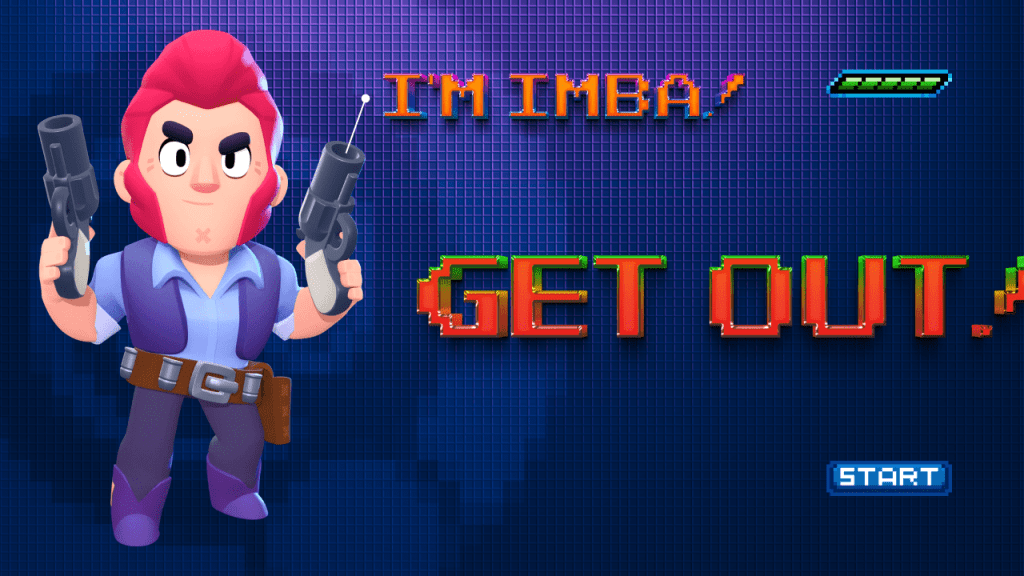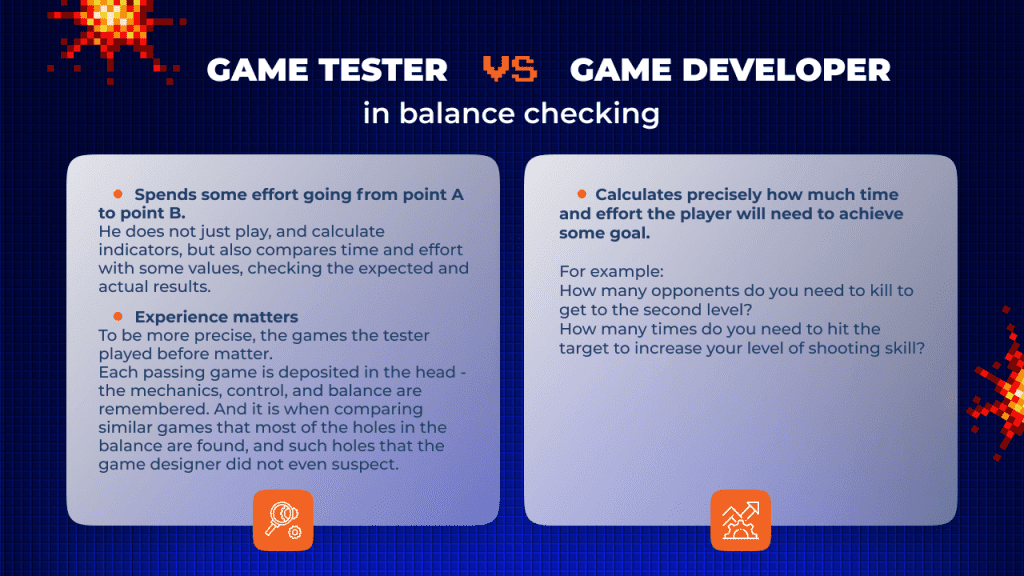Balance adjustments in multiplayer games
by Alyona Kolesnikova | October 26, 2022 11:40 am
People go to online games for different purposes. Skilled gamers come to humiliate and dominate, lovers of socialization come to appreciate chatter and guild clans, and business people begin to study the game economy or delve into crafting. All three categories of players are primarily focused on the first part of the abbreviation – MMO. It is essential for them that the game world, first of all, satisfies their goals. And they are pretty understandable. Moreover, it is one of the surest ways to develop online worlds. Distortions in the balance of classes are needed.
What do we mean by game balance?
In most games, passion and the desire to defeat an opponent keeps the player in the game.
However, if one plays the same game for a long time, players begin to discard everything that does not bring victory closer. The player starts to do the same thing from game to play, turning the game into a routine. Routine to be done to have a chance to win. For most players, this is a fun killer. That is why the task of developers is to change this routine.
It is clear that over time, players will build a new scheme and again be able to discard everything that is superfluous and interferes with victory. Therefore, the balance is corrected constantly. This is especially important for games in which there are competitions. For example, in eSports.
Various strategies for passing the game make the matches more exciting both for the players themselves and the public that watches these matches. In general, in this way, it is possible to maintain interest in the product as a whole.
An engrossing point here is also that this is a subjective area in which each developer makes decisions in his own way based on his vision and technical capabilities.
Do we want a totally balanced game?
We often say we want a balanced game, but “balanced” has many meanings. Final Fantasy XI, for example, is balanced around the idea that each work has roughly the same tricks.
In contrast, World of Warcraft loves general balance adjustments where a specific class or specialization takes 20% more damage or 20% less damage. The problem with this balancing form is that it doesn’t really solve tricks (or lack thereof). A 20% damage reduction makes the spec 20% worse, while a 20% increase no longer makes the rotation terrible.
You can also balance things out by trying to tweak or adjust specific abilities… but that can cascade or have no effect at all, and sometimes you remove or weaken a command that doesn’t underpin any power.
The battle’s effectiveness depends on the level of proficiency in the weapon that you pump when using this weapon. And that’s ok. Because all these nuances share the charm of the game world, they endow it with a certain degree of plausibility and uniqueness. And this, like nothing else, contributes to getting used to the character’s role.

Is class balance in MMOs achievable?
Balancing is often the reason users prefer skill-based games over class-based ones. But balancing is tricky, especially in popular games. One day, a developer may find himself in a situation where the players understand character design better than him. And only because this player is a real nerd. Having skills instead can feel more boring or cause more problems because they can be combined with other skills. However, many games make this less painful for players because they are easier to switch. Were the swords badly nerfed? Axis transition. Is fire magic too slow now? Switch to ice. There will always be people – PvE, PvP, or a combination of both – who get upset about balance adjustments. Sometimes those people can be completely wrong, like when a class/skill is so out of line with the rules that it threatens the design of the rest of the game. Completely ignoring balance seems like a bad idea, but minimizing its impact is essential.
Sometimes it seems like newer games suffer from “a balance must be achieved at all costs, including fun.” In comparison, older games seemed less obsessed with balance (with gamers and developers less obsessed).
Optimizing balance too often means optimizing the fun of classes focusing on more than combat. Thus, no matter how much we would like it – balance optimization remains an unattainable goal. If you pursue one goal, it harms the game, and fun is sacrificed for optimization.
Why can’t all edits be made at once during the testing phase?
Balance in online games is kind of like the process of life: it’s never perfect, it never ends, and you still have to keep trying. We don’t give up just because we know we can never reach the state of victory. Push the damn rock up that hill.
Obviously, this matters much more in MMO PvP than anywhere else. Team play, faction play, anti-grief mechanics, and character selection are valuable tools to mitigate the poor balance of individual classes in all game modes.
No MMO developer can play everything; balance is a continuous team effort to listen, observe and test all types of players and situations in both simulation and production.
Developers get waves of angry digital screams, especially when the balance is a pipe dream. It seems that game developers don’t really play the games they do, or at least don’t play them with the depth and attention of an average person. This is probably not helped by the insider knowledge of the developer – the recognition that, mathematically, everything is “better.”
However, there are testers, and here, already at the internal testing stage, it is possible to collect feedback and make changes.
Which in no way excludes that changes will be needed in subsequent releases.
The trick here is to try and ignore the numbers and focus more on feeling and enjoyment. The user doesn’t care about adjusting the balance as long as their mage can still blow things up and the knight can swallow a giant rift.

You can’t make everyone happy.
It really is. Players become frustrated with their character and may quit the game. So, companies buff their class and possibly nerf the other type a bit. And that’s how it makes players of that class want to leave. Here’s the problem: you’re trying to do the right thing by forcing some balance with a live patch. But you risk making changes that could irritate your players. This is a win-win scenario or, at best, a “lesser of two evils” solution.
In short, every approach has problems. The question remains open. And we think it is essential to keep the balance when creating balance adjustments to multiplayer games – no matter how funny it sounds. Do you agree?
Learn more from QATestLab
Related Posts:
- Game Check-Ups Overview: Why Do You Need Release Ready Testing For Sure?: https://blog.qatestlab.com/2024/08/28/game-check-ups-overview-why-do-you-need-release-ready-testing-for-sure/
- Updates Without Mistakes: Regression Testing in Game Development: https://blog.qatestlab.com/2022/08/30/game_regression_testing/
- Rumor Has It: Myths of Unity Game Engine: https://blog.qatestlab.com/2022/08/10/myths_unity_engine/
Source URL: https://blog.qatestlab.com/2022/10/26/balancing-multiplayer-games/

